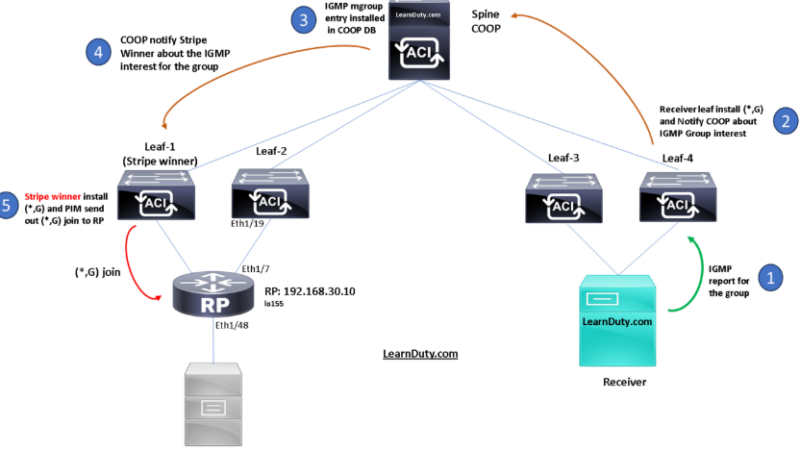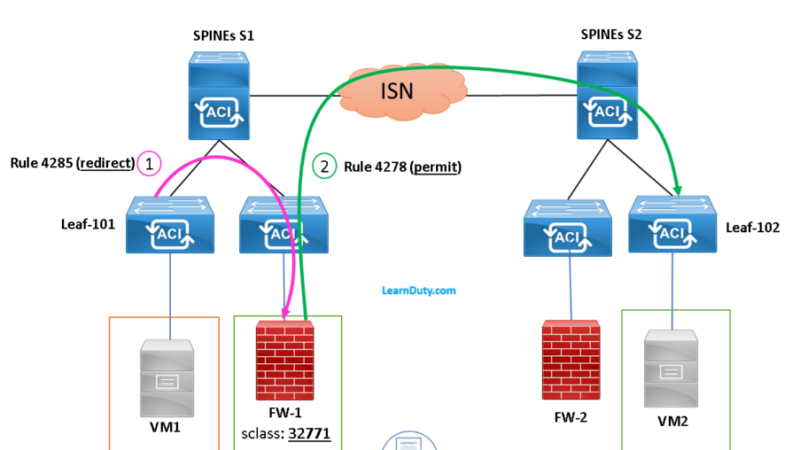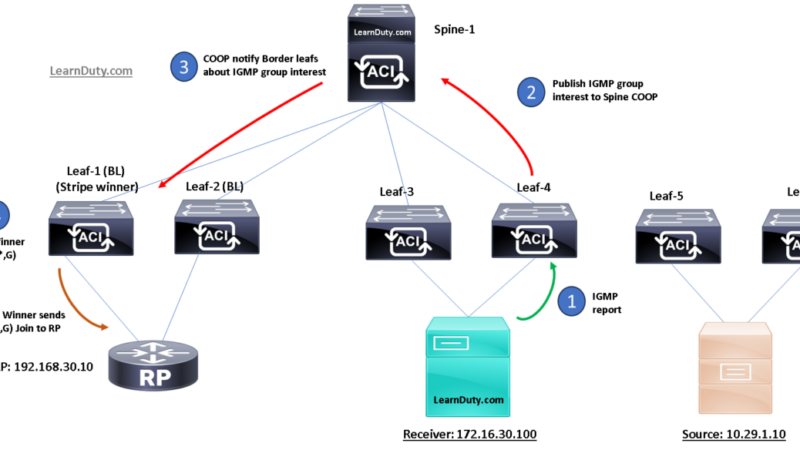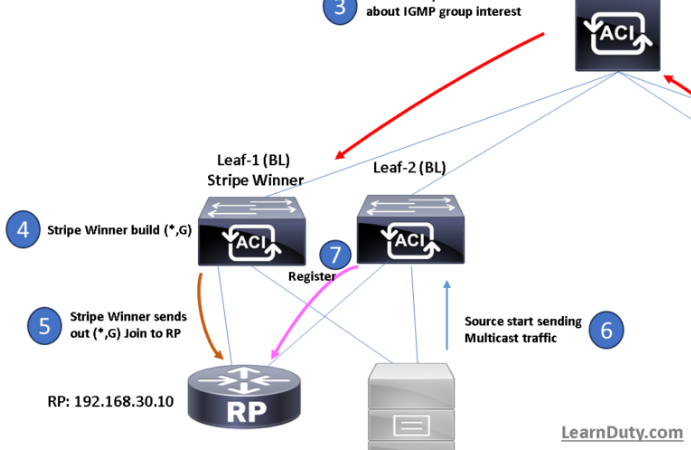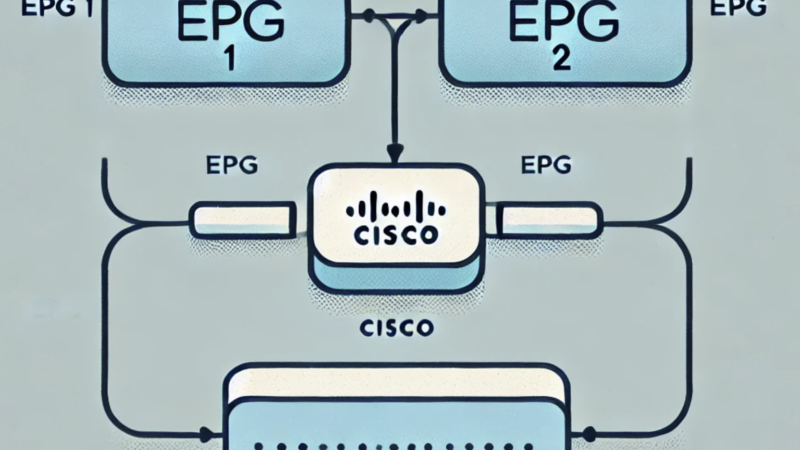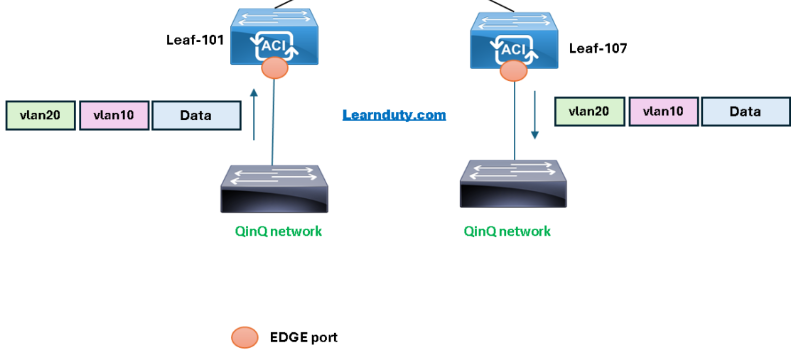SNMP Configuration on Cisco ACI
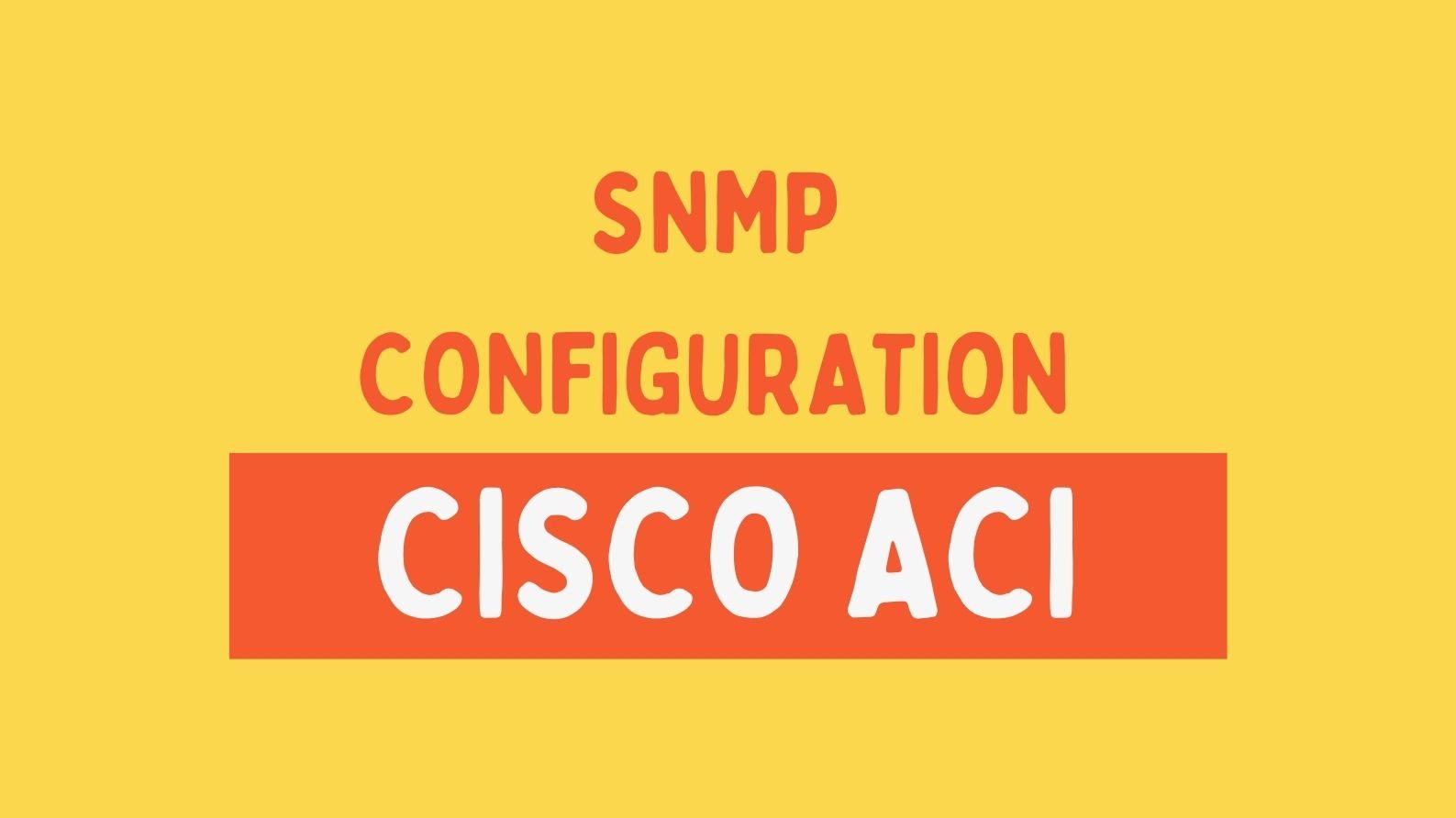
Check SNMP Article below for SNMP Basics:
Contents
ACI SNMP Configuration Overview

ACI SNMP Scopes:
in ACI, there are two scopes SNMP information can be pulled from:
1. Global
2. VRF Context
The Global scope will pull chassis MIBs such as the number of interfaces, interface indexes, interface names, interface status, etc of a leaf/spine node.
VRF Context scope-specific MIBs will pull VRF specific information such as IP addresses and routing protocol information.
Create SNMP Destination Group:
navigate to: Admin > External Data collector > Monitoring Destinatio > SNMP
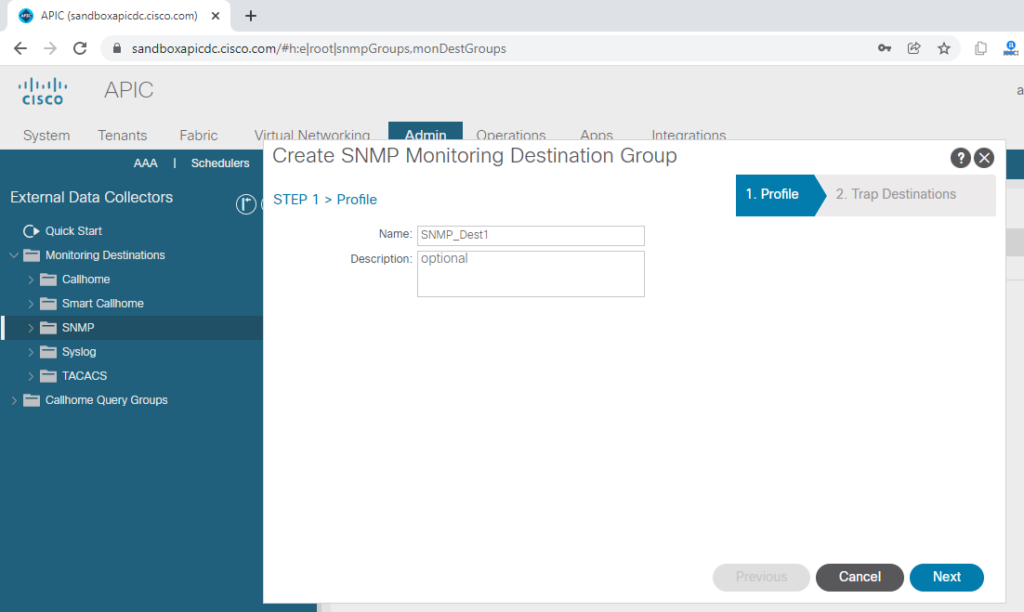
Create SNMP Trap Destination:
✓ The Trap Destination Host(s) defines the SNMP manager for sending SNMP Traps (UDP PORT 162 or Custom Port if SNMP manager using custom configuration).
Notes: SNMP traps enable an agent (ACI in our case) to notify the management station (NSM) of significant events by way of an unsolicited SNMP message.

- Enter the SNMP Manager IP address, the used SNMP version, the security name (community string in this case), and the Management EPG to access the SNMP Destination (Out of Band in our case) :
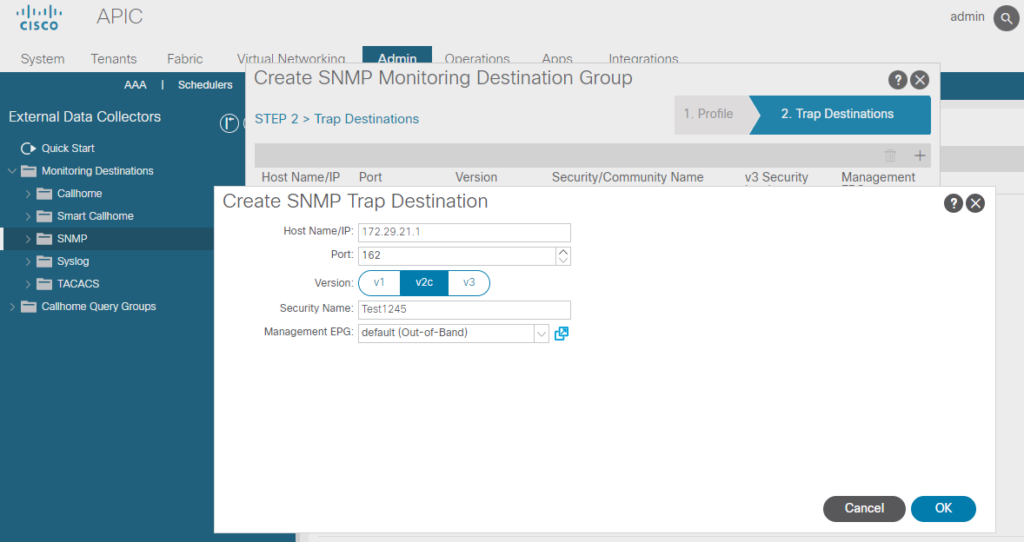
Create SNMP Monitoring Policy:
Navigate to: Fabric -> Fabric Policies -> Policies -> Monitoring
- First Create a Monitoring Policy:

- Second, Create an SNMP Source:
The SNMP source profile determines the fault information, severity level, and destination for sending messages to the SNMP destination.
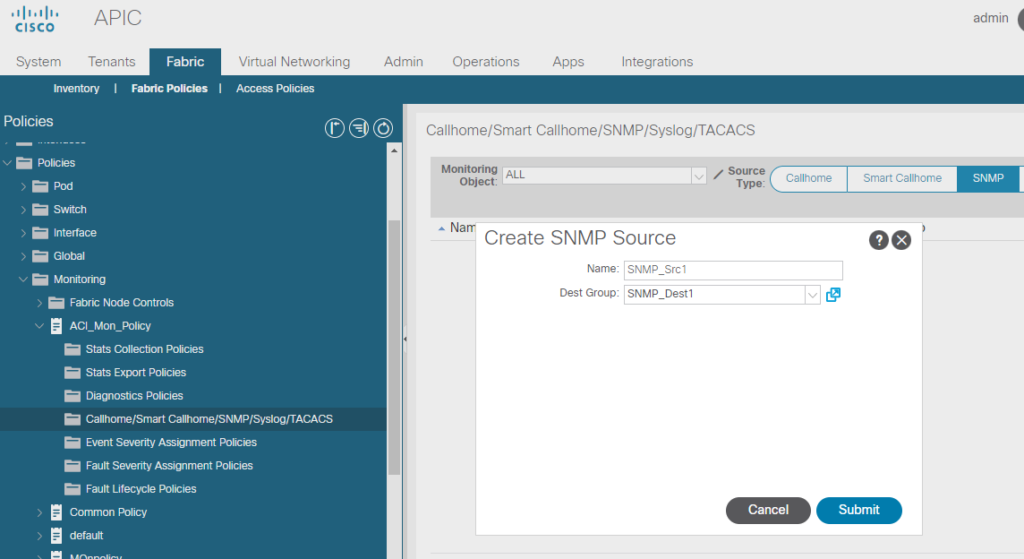
Do, the same thing under Access Policies:
Fabric -> Access Policies -> Policies -> Monitoring

Configure The SNMP Fabric Policies:
1- Create SNMP Pod Fabric Policies, navigate to the following APIC web GUI path:
Fabric -> Fabric Policies -> Policies -> Pod -> SNMP
✓ The Community Policy Name field defines the SNMP community string to be used. For our purposes let’s use the community string CommString1.
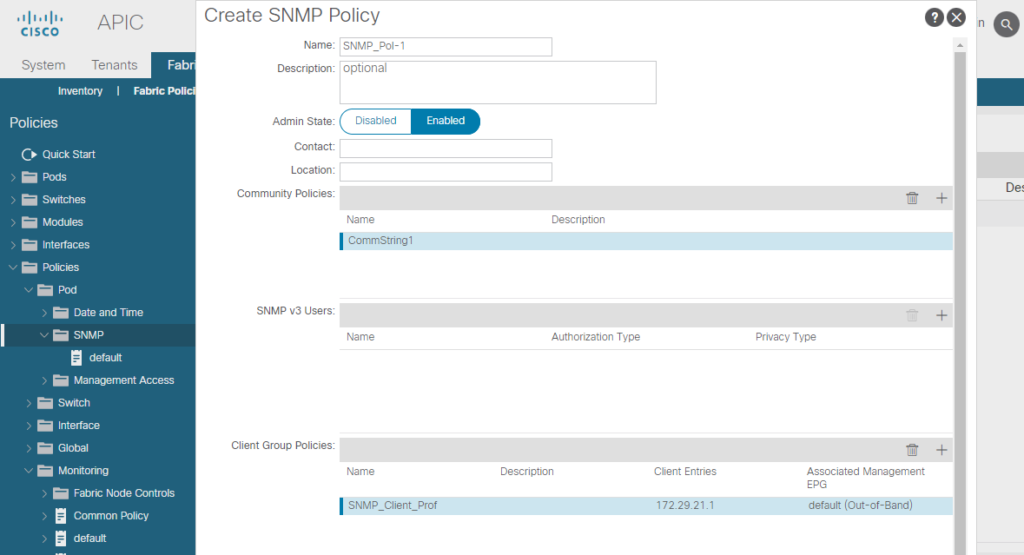
✓ The “Client Group” define Hosts (SNMP manager) & subnets allowed to send SNMP Get\Walk Requests to ACI (on UDP PORT 161).

The purpose of the Client Group Policy/Profile is to define what IPs/subnets are able to pull SNMP data from APICs and fabric switches:

2- Apply the SNMP Pod Fabric Policy:
Navigate to: Fabric -> Fabric Policies -> Pods -> Policy Groups and select the Previously created Policy:

CONFIGURE SNMP VRF CONTEXT SCOPES:
The SNMP context profile enables you to specify a context to monitor with a community profile.
Go under the Tenant, Open Networking > VRF and right Click on the VRF “Create SNMP Context“:


